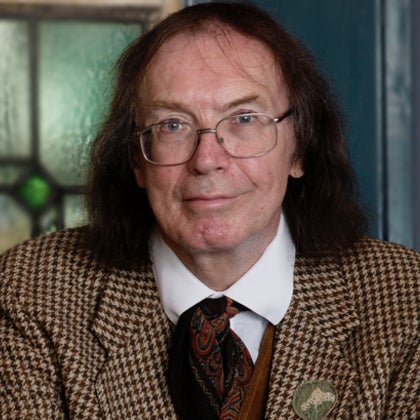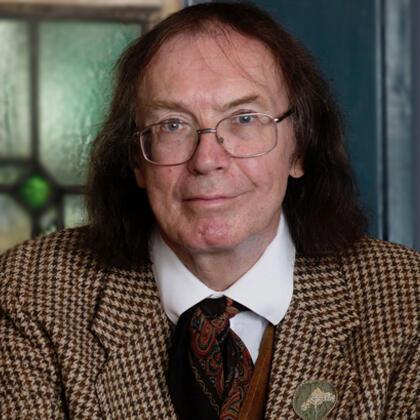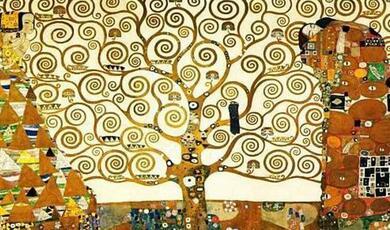Modern Pagan Witchcraft
Share
- Details
- Text
- Audio
- Downloads
- Extra Reading
Pagan witchcraft, especially in its first publicly apparent form of Wicca, is the most familiar and notorious form of modern Paganism. It is a counter-cultural religion of astonishing boldness, based on feminism, love of nature, personal growth and the redemption of the traditional figure of the witch.
This lecture looks at its origins and the roots of its success across the Western world, given it flouts so many conventions. It also discusses what modern Pagan witches actually do, and why they do it.
Download Text
Modern Pagan Witchcraft
Professor Ronald Hutton
14 May 2025
Modern Pagan witchcraft, the oldest and most influential tradition of which is called Wicca, was probably the first fully formed religion that England has given the world, as opposed to its own forms of other religions such as Christianity. It has spread across the West. Most unusually, it is also a religious tradition inspired, unwittingly, by academic scholars.
Its roots run back to the eighteenth-century movement called the Enlightenment, which persuaded the people in charge of Europe that witchcraft did not exist. This meant that the numerous executions of alleged witches that had occurred over the previous three centuries had been a terrible mistake. The Enlightenment radicals therefore used this realization to attack traditional social elites and established Churches. In the era of reaction following the fall of Napoleon, German conservative academics met this challenge by declaring that the alleged witches had still deserved to die because they were practitioners of a bloodthirsty and depraved surviving pagan religion. They were answered in turn by French and American republican liberals, who adopted the idea of a surviving pagan religion, called witchcraft, but declared that it had been a thoroughly good one. In their representation it had honoured women, nature and freedom, and been pitted against repressive medieval aristocracies and churchmen. In the early twentieth century this idea was taken up enthusiastically in Britain, and by the middle of the century it was repreated as an orthodoxy in textbooks by prominent academic experts in the medieval and early modern periods.
There was accordingly some credence to the claim made in 1951 by a retired colonial civil servant called Gerald Gardner, that the pagan witch religion had survived in secret to the present. He stated that in 1939 he had been initiated into one of the last covens of it, in the New Forest, and learned its traditions. He now revealed it to the public in order to transmit and preserve it. He had considerable success in attracting initiates, and his religion spread across Britain in the 1950s and crossed to North America in the 1960s. No confirmation has been found to date of the existence of the coven into which Gardner claimed to be initiated, and so thus far he is still the sole known source of his religion. It seems most likely that he and his friends developed it and is certain that it continued to be developed by them all through the 1950s.
Its early rites show every sign of having been put together from a medley of different existing sources, but it also contained major features unique to it, which marked it as a distinctive and viable religious system. It rejected both monotheism and the polytheism of ancient paganism, to honour a divine partnership between a goddess and god, representing between them the creative and sustaining powers of the cosmos. Of these, the goddess was the more important. The religion was based on small groups called covens, likewise, led by a priestess and priest, of whom the priestess was the more important. It also had a distinctive concept of the afterlife, consisting of group reincarnation, whereby people attached to each other in one life could be reborn in the same places and times in the nexts, to continue the relationship. By blending paganism with ceremonial magic, it furthermore embodied a shift in relations with the divine, whereby deities were not worshipped but invoked into magical circles like familiar spirits and worked with as friends. All these features suited Gardner’s own tastes, as did two more provocative features of his religion: that initiates worked together nude and that they induced trance in each other by gentle binding and scourging. The former joined with candlelight, incense and liturgy to create an otherworldly atmosphere, while the latter was the main means open to the aged and asthmatic Gardner to achieve altered consciousness. The scourging has however since been abandoned by most Wiccans and many also now work robed.
What is clear is that Gardner’s Wicca was a counter-cultural religion of sensational boldness. It crashed the barriers of religion and mores in the still very conservative Western world of the mid-twentieth century.
This character also, however, enabled it to benefit from the changes in social and cultural convention which followed in the rest of the century. One was the impact of feminism, when the witch is one of the very few images of independent female power that traditional European culture has bequeathed to the present. Another was the rise of environmentalism, which chimed with pagan witchcraft’s focus on a sacralized natural world. A third was the emphasis on individual self-expression, self-realisation and personal growth, when this witchcraft celebrated individual power and the joys of living. Accordingly, it developed steadily through the rest of the century and into the next, attracting further charismatic figures on both sides of the Atlantic, who further augmented and popularized it. This enabled it to survive the collapse of its original foundation myth, as professional historians from the 1970s began to study the witch trials systematically and proved that those accused had not been practitioners of a surviving pagan religion. The result was a splendid paradox. What Gerald Gardner revealed had been presented as the planet’s most ancient religious tradition. What it had turned out to be instead was a viable and successful new one especially well-suited to radical late modernity.
© Professor Ronald Hutton 2024/5
References and Further Reading.
Hutton, Ronald, The Triumph of the Moon. 2021.
White, Ethan Doyle, Wicca. 2015.
White, Ethan Doyle, The New Witches of the West. 2024.
Hutton, Ronald, The Triumph of the Moon. 2021.
White, Ethan Doyle, Wicca. 2015.
White, Ethan Doyle, The New Witches of the West. 2024.
Part of:
This event was on Wed, 14 May 2025
Support Gresham
Gresham College has offered an outstanding education to the public free of charge for over 400 years. Today, Gresham College plays an important role in fostering a love of learning and a greater understanding of ourselves and the world around us. Your donation will help to widen our reach and to broaden our audience, allowing more people to benefit from a high-quality education from some of the brightest minds.


 Login
Login







